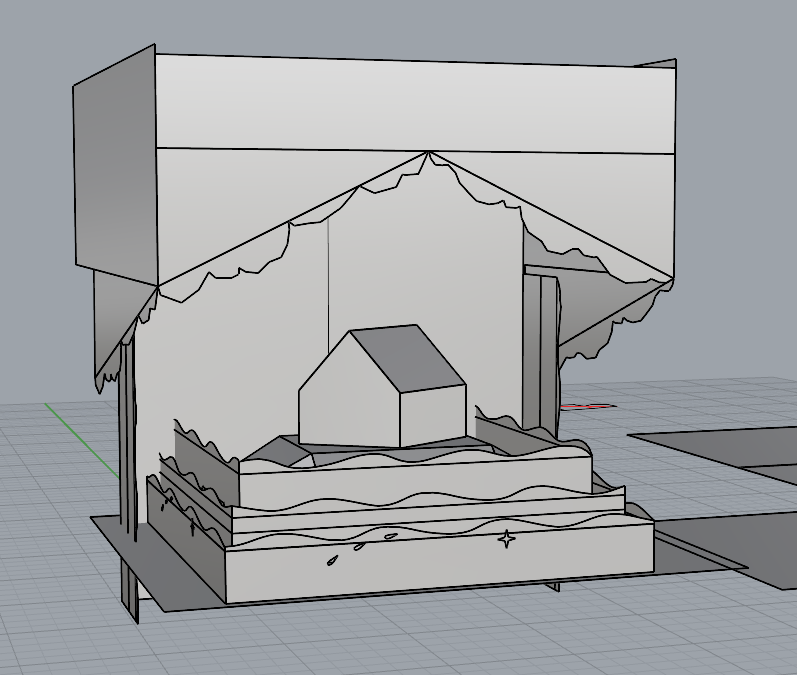Papercraft Lightbox: House By The Sea
Seeing the works of Hari & Deepti deeply inspired me to create pieces focusing on the shape and form of the environment to tell a story. While brainstorming ideas for this project, I was clouded with personal problems and thoughts, which did help me gain ideas for this project. Ichiko Aoba's music inspired me to create this composition, as it not only helps in my general creative process but also provides comfort when struggling with personal things in life. With my goal of experimenting with a new art form in mind, I aimed not only to learn something new but also to create a personal piece of work.
Here are some of the sketches from the beginning of the project as I tried to brainstorm (ft. weird doodles). I believe the personal things that clouded my mind during this process helped me create an idea I was excited to bring to life. While working on projects at school, I usually focus on prioritizing academic aspect over personal ones, but because of my newfound interest in Hari and Deepti's works, I wanted to push myself beyond just 'making work for school.' I hoped that in the end, I would be able to look at this piece and consider it a personal work of art once it was finished.
After completing the model, with the mechanics and visuals all planned out, I laid out each individual piece in groups according to what they would be attached to, all on a flat surface (2D). I added the tabs needed for gluing the pieces together, then tried figuring out how I could change the style of lines shown on the pieces to indicate the cutting and folding lines.
Although I knew the directions for placing it, it was not done on my computer quite correctly. Instead of it outlining one line, it would select an entire surface, making it a confusing process that unfortunately led me nowhere. Despite the disappointment, I had previous experience planning things out and am quite confident in my ability to know where certain things go and where they should be cut—especially if it is my own work. With time running out, I decided to move onto the next step.
After sizing and scaling everything down to fit onto two pieces of 8.5x11-inch paper, I had completed the digital samples. Even though the process of learning in Rhino was long and, at times, confusing, I found that the past few weeks spent building this entire piece on Rhino were actually quite enjoyable in the end. Looking back, I can see my growth in using the program—from not even knowing how to stack two cubes on top of each other, to creating something I'm excited to finish.












Comments
Post a Comment